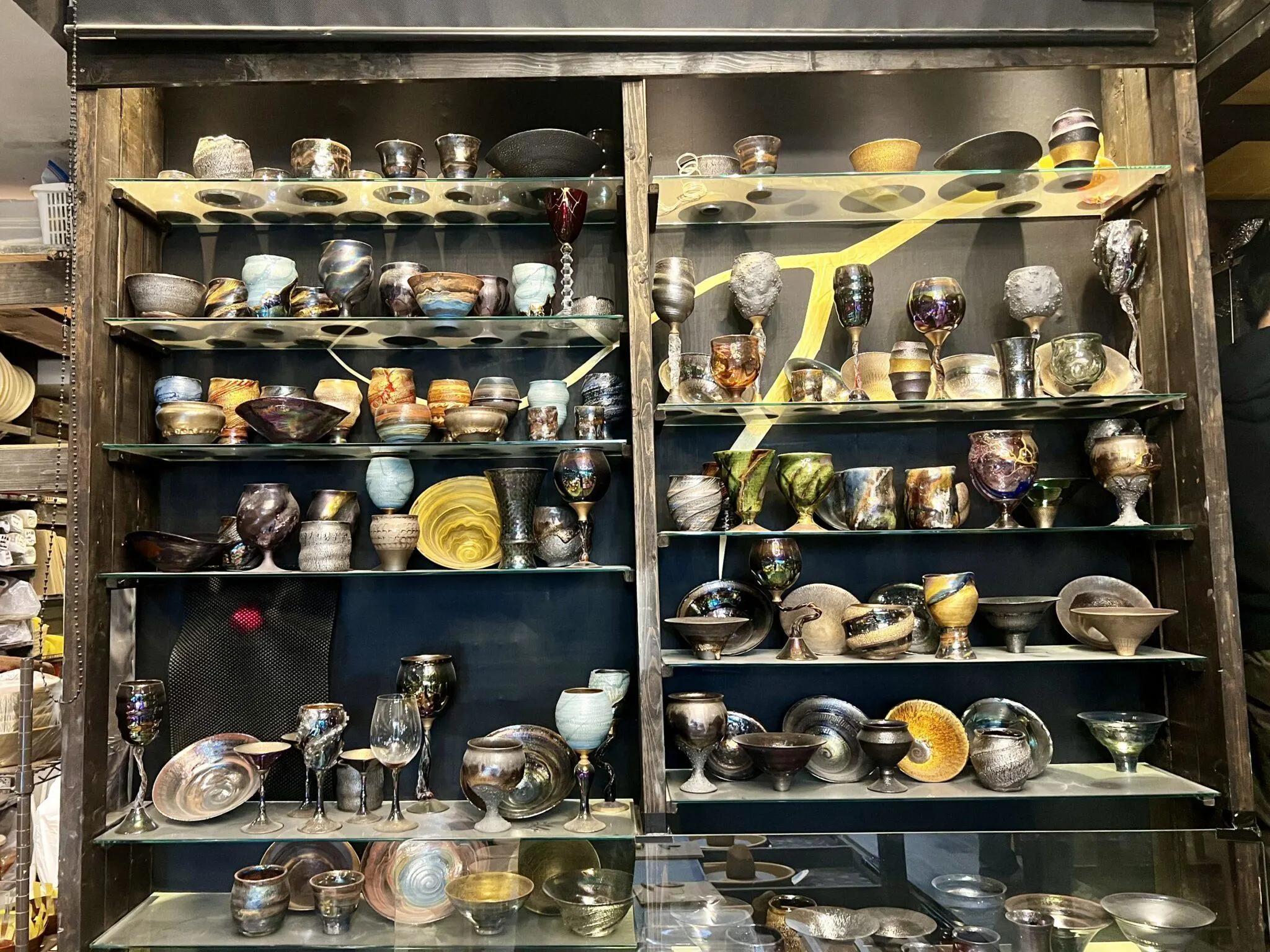The Japanese art of kintsugi is centuries old, but it’s only in recent years that it’s gained popularity across social media.
Memes sharing the poignant message behind the practice have gone viral, and one reached me prior to my 10-day trip to Japan.
It was a brief but impactful visual introduction.
I knew this was an activity I had to experience myself, so I went on a search to find a kintsugi class in Tokyo.
That’s when I found Taku Nakano Ceramic Arts.
I took a 90-minute class that forever changed my perspective on loss and failure.
Read on for more of my kintsugi experience!
RELATED POST: RIDING GO-KARTS DOWN THE STREETS OF TOKYO IN A ONESIE
What is kintsugi?

Kintsugi is the art of repairing broken objects with gold. Typically, it applies to ceramics and pottery.
The practice aims not to hide the cracks but accentuate them, emphasizing that items with a story to tell are even more beautiful because of that history and should not be discarded.
Repairing broken objects with gold lacquer then becomes a metaphor for healing ourselves.
As humans, we’re unable to go through life without some cracks along the way. We shouldn’t feel ashamed or try to hide them, pretending to be flawless and forever in our original manufacturer’s condition.
Instead, we can embrace our past, our broken moments, our failures, as the moments where we grow into wiser versions of ourselves.
These are the moments and lessons that make our life stories richer.
We are all beautifully cracked beings finding gold in the missteps along the way.
Where is Taku Nakano Ceramic Arts?

Taku Nakano Ceramic Arts is located in Tokyo, in the fashionable Omotesando neighborhood.
Take the Ginza Line, Chiyoda Line, or Hanzomon Line to Omote-Sando Station and it’s an easy 5-minute walk from there.
The studio is located in the basement of a four-story commercial building. Be on the lookout for the sign with the initials “TNCA” at the bottom of a longer list of business names or you could miss it.
The studio opens on time and has capacity restrictions so if you get there early, just hang out.
You need to walk down a flight of stairs to access the lesson.
I was the first one to arrive for my class and was joined by several others shortly thereafter.
We waited for the gate to open, then followed Taku Nakano’s assistant inside.
Who is Taku Nakano?

Taku Nakano is a kintsugi master and ceramist.
In his introduction, he tells you a story that reveals his age and leaves you in sheer disbelief. Perhaps kintsugi doubles as a fountain of youth?
He is magnetic, reading from an English document to tell us his life story and how he was drawn to the art of kintsugi.
Above all, he hopes that the class leaves us with much more than just a souvenir.
He wants what we create to be a reminder that we can always put our broken pieces back together again, even more beautiful and stronger than before.
What does a kintsugi class consist of?

There are several parts to the class.
First, you pick the piece that you’re going to mend. The broken pieces are tentatively held together with tape.
After receiving instruction, you begin to work on your piece.
You file down all along the cracked edge. You want to aggrandize the break and smooth down the sharp surface to make space for the gold to really shine.
The more you file, the thicker the gold lines will be.
Then, you add a glue that brings the two pieces together, ee immediately adding gold to the glue shimmer to decorate and color the lacquer.
You can pick more than one piece to work on. I had two pieces.
It was almost meditative work, maneuvering and shaping the item in your hands.
We were sat at group tables so I was able to chat with two young men on their honeymoon seated next to me, and the time flew by!
I appreciate that the pieces are able to be taken with you the same day and that you don’t have to come back a few days later after it’s had time to process and dry.
They also pack your piece up for you in a box with shredded tissue inside for easy transport.
RELATED POST: GIANT RAINBOW COTTON CANDY IN HARAJUKU, TOKYO
How much does a kintsugi class cost?

There are several options available for visitors, all on their website.
I took a 90-minute kintsugi lesson. It costs 7700 Japanese Yen (JPY) per person, about $50, for 2 people minimum. For a solo student, it’s 11,000 JPY, about $75.
There’s also kintsugi with wabi-sabi lesson, a 110-minute experience that costs 15,400 JPY, about $100.
Wabi-sabi is a Japanese line of thinking that teaches the acceptance of transience and imperfection. You also get a nicer/bigger piece to work on.
There are also pottery lessons, with various pottery wheels in the studio.
You can book directly with the facility, just DM or email them. They responded to me in English.
The site is in Japanese but you can use a translator function but it’s still manageable if you want to navigate it without translation because the names of the activities and prices are readily displayed.
I reserved a few weeks in advance but I think as long as you make a reservation they should be able to find a place for you. They also have the ability to do group or private bookings.
RELATED POST: VISIT THE HARRY POTTER THEMED CAFE IN TOKYO
What did this experience mean to me?

On a personal note, I went on this experience at a low moment in my life, when I felt broken.
I’m getting teary-eyed just writing this, because of how impactful this memory is for me.
It sounds silly to say about a 90-minute art class, but I needed this.
I needed to see that I could shine brighter as my broken self, and that my sorrow would ultimately add to dramatic range of highs and lows in my life story.
If you’re going through something similar, I cannot recommend this experience enough.
RELATED POST: TAKING A NINJA CLASS IN KYOTO, JAPAN
Till next time, safe travels!
Liked this post? Pin me below:



